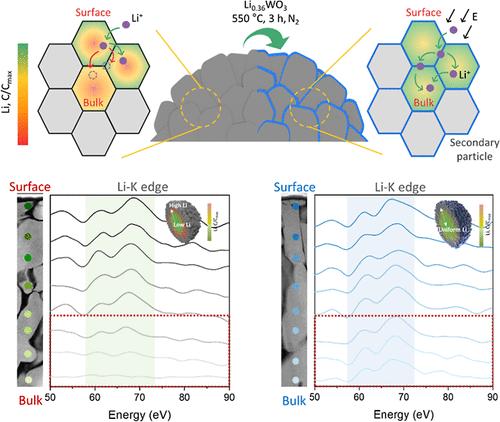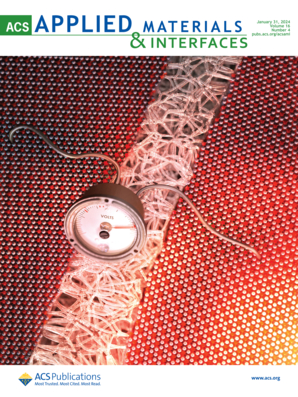Cation-Deficient LixWO3 Surface Coating on Ni-Rich Cathodes Materials for Lithium-Ion Batteries
IF 8.3
2区 材料科学
Q1 MATERIALS SCIENCE, MULTIDISCIPLINARY
引用次数: 0
Abstract
In the pursuit to increase the energy density of lithium-ion batteries (LIBs), considerable efforts have focused on developing high-capacity cathode materials. While Ni-rich (Ni ≥ 80 at. %) layered cathode materials are considered a viable commercial option, surface engineering is crucial for enhancing their cycle performance for successful implementation in commercial LIBs. Various functional materials have been explored for effective surface protection and stabilization to reduce interfacial resistance and enhance the structural stability of Ni-rich cathode materials. In this context, we propose a surface coating with a nonstoichiometric lithium hexagonal tungsten bronze (LixWO3) for Ni-rich cathode materials via simple wet-coating. We demonstrate that the distinctive physicochemical properties of LixWO3, such as its high ionic conductivity (∼10–6 S cm–1) and mechanical strength (∼236.0 MPa), are beneficial for enhancing the cycle performance of Ni-rich cathode materials by modulating the interfacial reactions without undesirable loss of reversible capacity. In practice, the LixWO3 surface layer induces a significant reduction in interfacial resistance and effective strain relaxation upon repeated Li+ insertion and extraction. Our findings provide insights into the development of highly reliable Ni-rich cathode materials for high-energy LIBs.

求助全文
约1分钟内获得全文
求助全文
来源期刊

ACS Applied Materials & Interfaces
工程技术-材料科学:综合
CiteScore
16.00
自引率
6.30%
发文量
4978
审稿时长
1.8 months
期刊介绍:
ACS Applied Materials & Interfaces is a leading interdisciplinary journal that brings together chemists, engineers, physicists, and biologists to explore the development and utilization of newly-discovered materials and interfacial processes for specific applications. Our journal has experienced remarkable growth since its establishment in 2009, both in terms of the number of articles published and the impact of the research showcased. We are proud to foster a truly global community, with the majority of published articles originating from outside the United States, reflecting the rapid growth of applied research worldwide.
 求助内容:
求助内容: 应助结果提醒方式:
应助结果提醒方式:


